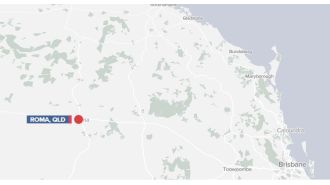A small group of 538 individuals have the power to determine the outcome of the US election, despite the country's population of 330 million.
US election: Popular vote won't determine president, decision comes down to Kamala Harris or Donald Trump.
November 5th 2024.

As the United States prepares for its presidential election, the outcome is not determined by the popular vote, but rather by the Electoral College. This unique political system, with only 538 votes out of a population of over 330 million, is vastly different from the system used in Australia. While it has its critics, let's take a closer look at how it works.
Each state, along with the District of Columbia, is allocated a certain number of Electoral College votes. The presidential candidate who wins the popular vote in a state receives all of that state's electoral votes. However, there are two exceptions to this rule. In Maine and Nebraska, two votes go to the popular vote winner while the remaining votes are given to the candidate who is more popular in each of the state's Congressional districts. The candidate who wins at least 270 votes wins the presidency.
It's important to note that not all states have the same number of votes. Each state has the same number of electoral votes as it does representatives in the Senate and Congress combined. This means that the number of votes can vary depending on the state's population. For example, California, with a population of over 40 million, has 54 electoral votes, while Wyoming, with a population of around 580,000, has only three.
So how are these votes counted? While voters fill out a ballot with the names of the presidential candidates, they are actually voting for a "slate" of electors who will represent their state in the Electoral College. These electors are chosen by each political party before the election and are typically officials and loyal party members. Once the Electoral College convenes following the election, the electors cast their votes and the results are then sent to Congress to be certified.
While the Electoral College system has been around for nearly 250 years, it has its fair share of criticisms. One of the most obvious is that it does not always reflect the popular vote. In fact, in three of the last six elections, the candidate with fewer votes nationwide has still won the presidency. This is due in part to the weight given to sparsely populated states. For example, Wyoming, with a population of around 580,000, has three electoral votes, giving it one elector per 200,000 residents. In contrast, California, with a population of over 40 million, also has three votes, but that is one elector per 13 million residents.
Another issue with the Electoral College is that it does not accurately represent all voters within a state. This is because all of the state's electoral votes go to the candidate who wins the popular vote, regardless of the margin of victory. For example, in California, where Joe Biden won by over five million votes, he received all 55 electoral votes. But if an additional four million people had voted for Donald Trump, Biden would still have received all 55 votes. This leads to a disproportionate amount of attention being given to "battleground states," where the race is close and every vote counts.
Despite its flaws, changing or removing the Electoral College is no easy task. It is enshrined in the Constitution and would require a level of consensus that is difficult to achieve in today's political climate. Some states have attempted to work around it by pledging their electoral votes to the winner of the national popular vote, but this approach also faces challenges. Ultimately, the Electoral College remains a unique and controversial aspect of American politics.
Each state, along with the District of Columbia, is allocated a certain number of Electoral College votes. The presidential candidate who wins the popular vote in a state receives all of that state's electoral votes. However, there are two exceptions to this rule. In Maine and Nebraska, two votes go to the popular vote winner while the remaining votes are given to the candidate who is more popular in each of the state's Congressional districts. The candidate who wins at least 270 votes wins the presidency.
It's important to note that not all states have the same number of votes. Each state has the same number of electoral votes as it does representatives in the Senate and Congress combined. This means that the number of votes can vary depending on the state's population. For example, California, with a population of over 40 million, has 54 electoral votes, while Wyoming, with a population of around 580,000, has only three.
So how are these votes counted? While voters fill out a ballot with the names of the presidential candidates, they are actually voting for a "slate" of electors who will represent their state in the Electoral College. These electors are chosen by each political party before the election and are typically officials and loyal party members. Once the Electoral College convenes following the election, the electors cast their votes and the results are then sent to Congress to be certified.
While the Electoral College system has been around for nearly 250 years, it has its fair share of criticisms. One of the most obvious is that it does not always reflect the popular vote. In fact, in three of the last six elections, the candidate with fewer votes nationwide has still won the presidency. This is due in part to the weight given to sparsely populated states. For example, Wyoming, with a population of around 580,000, has three electoral votes, giving it one elector per 200,000 residents. In contrast, California, with a population of over 40 million, also has three votes, but that is one elector per 13 million residents.
Another issue with the Electoral College is that it does not accurately represent all voters within a state. This is because all of the state's electoral votes go to the candidate who wins the popular vote, regardless of the margin of victory. For example, in California, where Joe Biden won by over five million votes, he received all 55 electoral votes. But if an additional four million people had voted for Donald Trump, Biden would still have received all 55 votes. This leads to a disproportionate amount of attention being given to "battleground states," where the race is close and every vote counts.
Despite its flaws, changing or removing the Electoral College is no easy task. It is enshrined in the Constitution and would require a level of consensus that is difficult to achieve in today's political climate. Some states have attempted to work around it by pledging their electoral votes to the winner of the national popular vote, but this approach also faces challenges. Ultimately, the Electoral College remains a unique and controversial aspect of American politics.
[This article has been trending online recently and has been generated with AI. Your feed is customized.]
[Generative AI is experimental.]
0
0
Submit Comment





